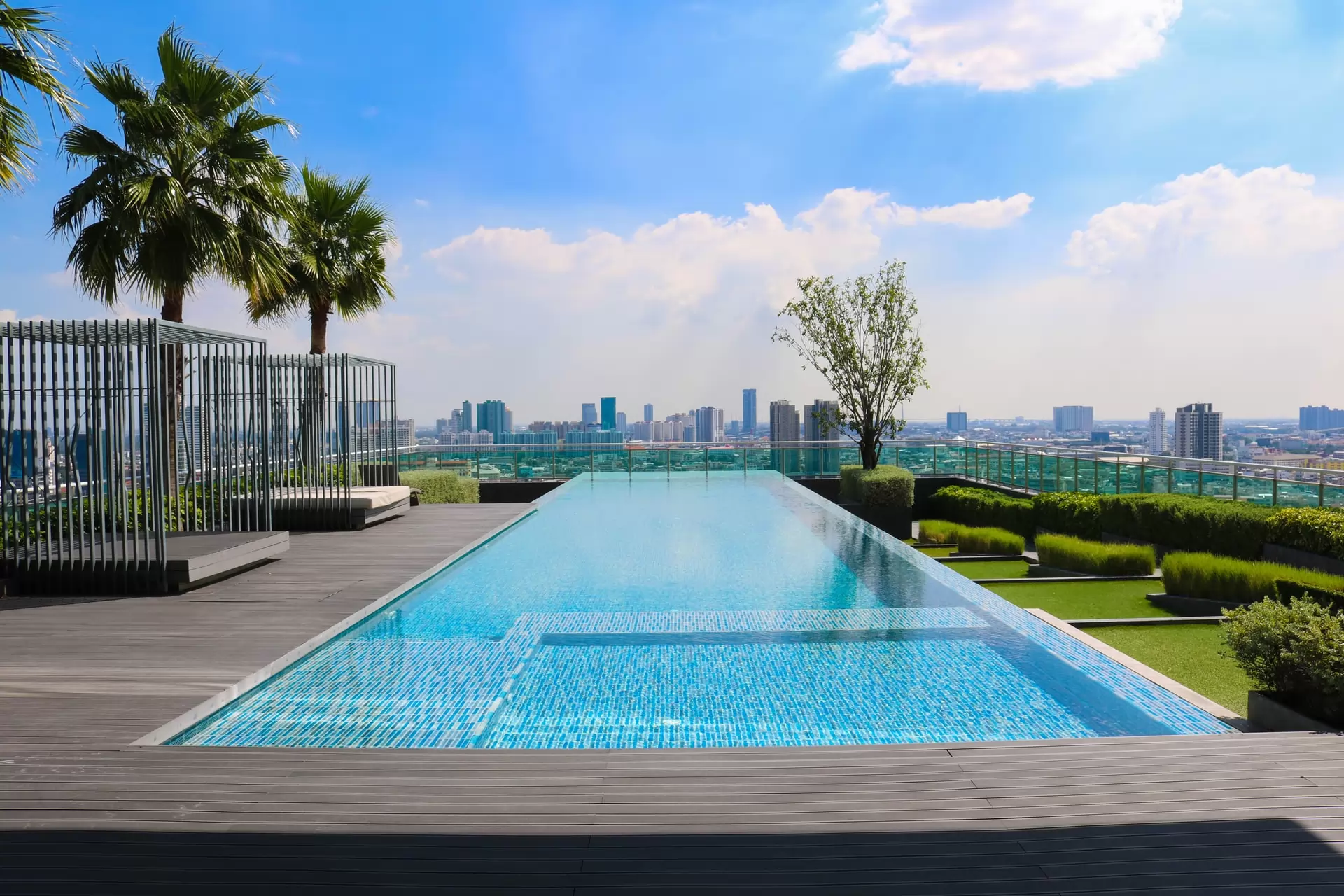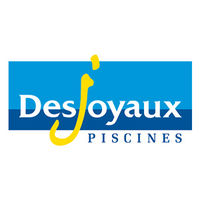Summary
to understand this market
Detailed content
 Inforamtion
Inforamtion
- Number of pages : 30 pages
- Format : Digital and PDF versions
- Last update : 07/03/2024
 Summary and extracts
Summary and extracts
1 Market overview
1.1 Definition and presentation
Swimming pools are in-ground or above-ground basins. They are designed for bathing or swimming. There are many different types of pool, depending on size (Olympic or non-Olympic), shape, type (above-ground, in-ground, natural, etc.) and end-user (hotels, local authorities, private individuals, etc.).
On a global scale, the swimming pool market has grown significantly in recent years, with the United States leading the way, followed by Europe and Asia, the latter of which is expected to experience strong growth in the coming years. In Europe, the three largest markets are France, Spain and Germany.
Spain has around 1.2 million swimming pools on its territory: some 120,000 are for public or collective use, while the rest are for private or individual use. This places Spain second in Europe in terms of the number of private swimming pools, behind France but ahead of Germany. Spain's pool industry comprises more than 2,500 companies, many of them small, employing around 70,000 people. The market is divided between new construction (40%), renovation (26.3%) and maintenance services (33.7%). The pandemic has boosted demand for swimming pools in Spain, with double-digit growth expected in 2020, followed by 5.2% growth in 2021.
1.2 The global market and the U.S. market
The global pool market was estimated in **** at $*.** billion. The market is expected to grow at a CAGR of *.*% between **** and ****.
Global pool market size World, ****-****, billions of dollars Source: ****
The US market: The United States is the market leader for swimming pools. In ****, there will be **.* million private pools ...
1.3 The domestic market
While there are some ** million swimming pools in the world, accounting for *% of the total, Spain, after the USA, Brazil and France, represents the world's *th largest pool market[***]. By ****, this would mean the construction of **,*** additional swimming pools in Spain. The following graph compares the countries with the most swimming ...
2 Demand analysis
2.1 Individual requests
Map of swimming pools in Spain in **** :
Pool or beach?
The data provided show the percentages of Spaniards preferring the pool to the beach, with **% preferring the pool and **% preferring the beach. A clear trend emerges, showing that the majority of Spaniards have a preference for the beach over the pool. ...
2.2 BtoB request
If between **** and ****, the number of trips made by Spaniards in Spain fell by **.*%, from **.* million to **.* million, during the same period, international tourism also dropped significantly, recording a **.*% drop from **.* million tourists to **.*. million tourists. While these figures are due to the Covid ** pandemic, there was a recovery in ****, with ...
2.3 Spanish urbanization leaves little room for private pools
Spain, a highly urbanized country:
The data provided tracks the percentage change in Spain's urbanization rate over a six-decade period, from **** to ****. The urbanization rate, which represents the proportion of the population living in urban areas in relation to the total population, has grown steadily over the years. In the ****s, ...
2.4 The pool-buying process
A product dependent on seasonality:
The data provided represents the average of Google Trends indices for searches for the term "piscina" (***) over different periods from March **** to January ****. These indices indicate the relative interest in swimming pools over time. Several trends emerge from the data. Firstly, there is seasonality in search ...
3 Market structure
3.1 Value chain
3.2 Magnitudes and market players
In ****, the pool sector consisted of *,*** companies and some **,*** employees. A comparison with the figures for **** reveals a concentration of the pool sector. Between **** and ****, the number of employees fell by **% and the number of companies by **%, while sales rose by *.**%.
Structure of the pool market in Spain Spain, ****, Source: ****
There ...
3.3 Distribution
Concernant les canaux de distribution d'une piscine, noous pouvons constaté la répartition suivante : premièrement, les distributeurs spécialisés représentent le canal de distribution dominant, avec une part importante de ** %. Les grandes surfaces constituent également une part significative du marché avec ** % des canaux de distribution. Internet, émerge comme ...
4 Offer analysis
4.1 offer typology
The * main types of swimming pools :
While swimming pools can be made from a variety of materials, there are * main types:
In-ground pools. These are the most traditional type of pool, offering the greatest comfort and durability. They are built by digging a hole in the ground and filling it with ...
4.2 Production cost analysis
In its **** report, ASEPPI (***) highlights two main types of cost impacting the production of swimming pools. These costs are related to energy and raw materials[***].
Energy:
Between **** and ****, the average price of electricity in Spain fell by **.**%. Then, between **** and ****, it increased by **.**%. However, between **** and ****, there was a slight increase ...
4.3 Pool market trends
The newspaper: La Web de las piscinas, highlights a few pool-related trends for the year ****:
Cordless cleaning robots: This season, electric cleaning robots, probably already the most purchased pool equipment, will experience a big boom. Cordless cleaning robots offer the same efficiency with added convenience, which is sure to boost their ...
4.4 Seawater pools: a solution to climate change?
In February ****, in response to the drought in Catalonia, the government of the Autonomous Community declared a state of drought emergency. This state of emergency comprises * sub-levels impacting water consumption. The measures affecting swimming pools are detailed below:
Level * : water consumption limited to *** liters per inhabitant per day. Filling of swimming ...
5 Regulations
5.1 Regulations
Construction standards :
Swimming pools must comply with the construction standards set out in Royal Decrees ***/**** and ****/****. They must be equipped with safety devices that comply with the technical and health criteria set out in Royal Decree ***/****.
Water quality:
Water quality must be optimal, filtered and disinfected to eliminate any pathogens. Chemical ...
6 Positioning the players
6.1
--> See this site https://asofap.es/asociados/buscador-de-empresas
- Desjoyaux Piscines
- Fluidra
- indalpool
- PISCINIA
- Innowater
 List of charts
List of charts
- Size of the global pool market
- Comparison of the number of swimming pools in selected European countries
- Sales trends in the Spanish swimming pool sector
- Percentage of Spaniards who prefer the pool to the beach
- Percentage of underground basins in Spain
All our studies are available online in PDF format
Take a look at an example of our research on another market!
Latest news
Companies quoted in this study
This study contains a complete overview of the companies in the market, with the latest figures and news for each company. :
 Choosing this study means :
Choosing this study means :
Access to more than 35 hours of work
Our studies are the result of over 35 hours of research and analysis. Using our studies allows you to devote more time and added value to your projects.
Benefit from 6 years' experience and over 1,500 industry reports already produced
Our expertise enables us to produce comprehensive studies in all sectors, including niche and emerging markets.
Our know-how and methodology enable us to produce reports that offer unique value for money.
Access to several thousand articles and paid-for data
Businesscoot has access to all the paid economic press as well as exclusive databases to carry out its market research (over 30,000 articles and private sources).
To enhance our research, our analysts also use web indicators (semrush, trends, etc.) to identify market trends and company strategies. (Consult our paying sources)
Guaranteed support after your purchase
A team dedicated to after-sales service, to guarantee you a high level of satisfaction. +44 238 097 0676
A digital format designed for our users
Not only do you have access to a PDF, but also to a digital version designed for our customers. This version gives you access to sources, data in Excel format and graphics. The content of the study can therefore be easily retrieved and adapted for your specific needs.
 Our offers :
Our offers :
The swimming pool market | Spain
- What are the figures on the size and growth of the market?
- What is driving the growth of the market and its evolution?
- What is the positioning of companies in the value chain?
- Data from several dozen databases
5 reports pack (-15%) ES Spain
- 5 reports at €75.6 excluding VAT per study to choose from our Spanish catalogue for 12 months
- Save 15% on additional studies purchased
- Choose to be refunded any unused credit at the end of the 12-month period (duration of the pack)
See the terms and conditions of the pack and the refund of unused credit.






 Desjoyaux pools offer a new R&D center - 01/02/2023
Desjoyaux pools offer a new R&D center - 01/02/2023













